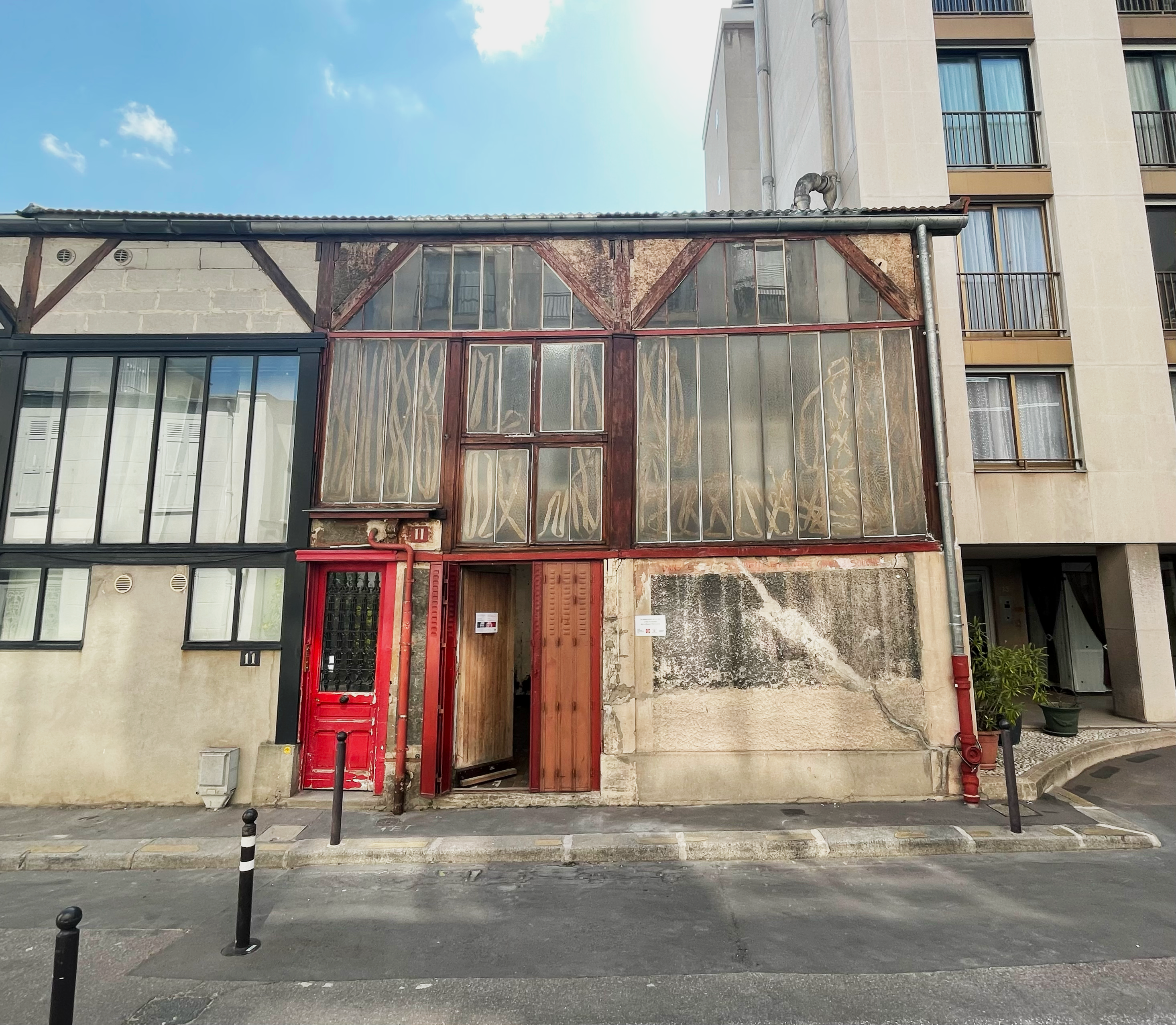
The Parisian studio where the likes of Amedeo Modigliani and Paul Gauguin once lived and worked has received a historical designation ahead of a renovation.
Atelier 11, located in an alleyway named Cité Falguière in southern Paris and constructed in the 1860s, has not undergone many renovations since the end of the 19th century. In October 2023, the nonprofit organization L’AiR Arts and another nonprofit using the Cité Falguière name, with assistance from the Fondation du Patrimoine, launched a campaign to raise funds for repairs.
At a May 15 ceremony, the atelier will officially be unveiling the Patriomoine d’Ile-de-France heritage designation, granted in Noveber 2023 by the General Inventory of Cultural Heritage of Île-de-France, an agency of the regional council. Bestowed upon sites with significant architectural and historical value, last month it was supplemented by a €150,000 ($161,800) grant towards the restoration of the Atelier 11 building.
The announcement of the designation coincides with L’AiR Arts expanding its fundraising efforts to reach an international audience, for which it has partnered with the Fondation de France and the Myriad Alliance. Previously, only people in France could donate and receive tax deductions.
“This is kind of a big step. Again, the heritage of this atelier is international, and the idea is to open it up to the international community,” said Mila Ovchinnikova, the founding director of L’AiR Arts, in a video call.
The designation will see a plaque fixed to the building’s façade when the eight-month long renovations are complete. Ovchinnikova said the hope is for work to begin this fall and completed in 2025 to mark the atelier’s 150th anniversary. The total renovation is expected to cost over €1 million ($1.07 million), and the nonprofit hoped to raise €150,000 from individual French donors during the campaign it previously launched. It has raised €12,025 ($12,900) from the French public to date.
Officials are pictured putting up a heritage marker on the famed Atelier 11 in Paris at a ceremony. Photo courtesy of L’AiR Arts
Once reopened, the atelier aims to work with other cultural institutions and private foundations worldwide to send artists to France to work in the studio. “They can send their candidates to Paris and create these opportunities for their candidates in in France,” said Ovchinnikova.
“Artists have been coming to the space to live and work over the last 150 years,” added program curator Clare Patrick. “But now, it’s really trying to broaden that community and bring more partners in and allow kind of for funded residencies for artists who can’t afford to pay for themselves to come but can partner with an institution who can then support that process.”
Ovchinnikova remains optimistic the atelier will be able to continue to serve artists, its new historical designation allowing the nonprofit to obtain more regional and federal grants, even if it has yet to receive support from the local Paris government.
“We don’t have municipal support yet, but since we have the regional support, it’s already kind of generates this domino effect,” she said. “It’s not very fast. We wish it was faster, but it really makes it difference.”
She further credits grassroots organizing for helping Atelier 11 achieve its heritage recognition—a project that’s been in works for 60 years, even though “for 60 years, nothing’s been done.”
“We did it in in two years,” she said about the historical designation. “So, it just shows the progress that we’ve made. But of course, nothing is as easy. If there will be no support in the future, we won’t be able to exist and survive. [The renovation is] not the goal. The goal is really to make this heritage sustainable and continue in the future.”